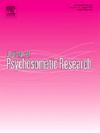Hypnosis as a non-pharmacological intervention for invasive medical procedures - A systematic review and meta-analytic update
IF 3.5
2区 医学
Q2 PSYCHIATRY
引用次数: 0
Abstract
Hypnosis is recognized as an effective non-pharmacological intervention for managing anxiety, pain, and physiological stress during invasive medical procedures. Despite its growing use, variability in techniques and inconsistent outcome measurements have challenged its clinical standardization. This systematic review and meta-analysis evaluated the effectiveness of hypnosis in reducing anxiety, pain, and physiological stress during invasive procedures, while identifying the most effective techniques as well as assessing analgesic use and safety. A comprehensive literature search was conducted in PubMed, Cochrane Library, and Scopus to identify randomized controlled trials (RCTs) evaluating hypnosis in invasive procedures. Eligible studies were assessed for bias using the Revised Cochrane Risk of Bias Tool. Meta-analyses were performed with a random-effects model, and subgroup analyses were conducted based on hypnosis techniques, patient characteristics, and procedure types. Twenty RCTs with 1250 patients were included. Hypnosis significantly reduced anxiety (SMD = −0.43, 95 % CI: −0.58 to −0.28, p < 0.001) and pain (SMD = −0.35, 95 % CI: −0.50 to −0.20, p < 0.001) compared to standard care. Subgroup analyses indicated that virtual reality-enhanced hypnosis and tailored interventions for high-anxiety procedures were most beneficial. Physiological stress markers, including heart rate and blood pressure, were also reduced, supporting the calming effects of hypnosis. Adverse effects were minimal. Hypnosis is effective and safe for reducing anxiety and pain during invasive medical procedures. Standardized protocols and further research are needed to optimize its clinical use and enhance adoption in routine care.
催眠作为侵入性医疗程序的非药物干预-系统回顾和元分析更新
催眠被认为是一种有效的非药物干预方法,可用于控制侵入性医疗过程中的焦虑、疼痛和生理压力。尽管催眠的应用越来越广泛,但催眠技术的多变性和结果测量的不一致性对催眠的临床标准化提出了挑战。本系统综述和荟萃分析评估了催眠在有创手术中减轻焦虑、疼痛和生理压力的效果,同时确定了最有效的技术,并评估了镇痛剂的使用和安全性。我们在 PubMed、Cochrane Library 和 Scopus 上进行了全面的文献检索,以确定评估有创手术中催眠的随机对照试验 (RCT)。采用修订版 Cochrane 偏倚风险工具对符合条件的研究进行了偏倚评估。采用随机效应模型进行元分析,并根据催眠技术、患者特征和手术类型进行亚组分析。共纳入了 20 项研究,1250 名患者。与标准治疗相比,催眠明显减轻了焦虑(SMD = -0.43,95 % CI:-0.58 至 -0.28,p < 0.001)和疼痛(SMD = -0.35,95 % CI:-0.50 至 -0.20,p < 0.001)。分组分析表明,虚拟现实增强催眠和针对高焦虑程序的定制干预最为有益。包括心率和血压在内的生理压力指标也有所降低,这支持了催眠的镇静作用。不良反应微乎其微。催眠对减轻侵入性医疗程序中的焦虑和疼痛既有效又安全。要优化催眠的临床应用并提高其在常规护理中的采用率,还需要标准化的方案和进一步的研究。
本文章由计算机程序翻译,如有差异,请以英文原文为准。
求助全文
约1分钟内获得全文
求助全文
来源期刊
CiteScore
7.40
自引率
6.40%
发文量
314
审稿时长
6.2 weeks
期刊介绍:
The Journal of Psychosomatic Research is a multidisciplinary research journal covering all aspects of the relationships between psychology and medicine. The scope is broad and ranges from basic human biological and psychological research to evaluations of treatment and services. Papers will normally be concerned with illness or patients rather than studies of healthy populations. Studies concerning special populations, such as the elderly and children and adolescents, are welcome. In addition to peer-reviewed original papers, the journal publishes editorials, reviews, and other papers related to the journal''s aims.

 求助内容:
求助内容: 应助结果提醒方式:
应助结果提醒方式:


